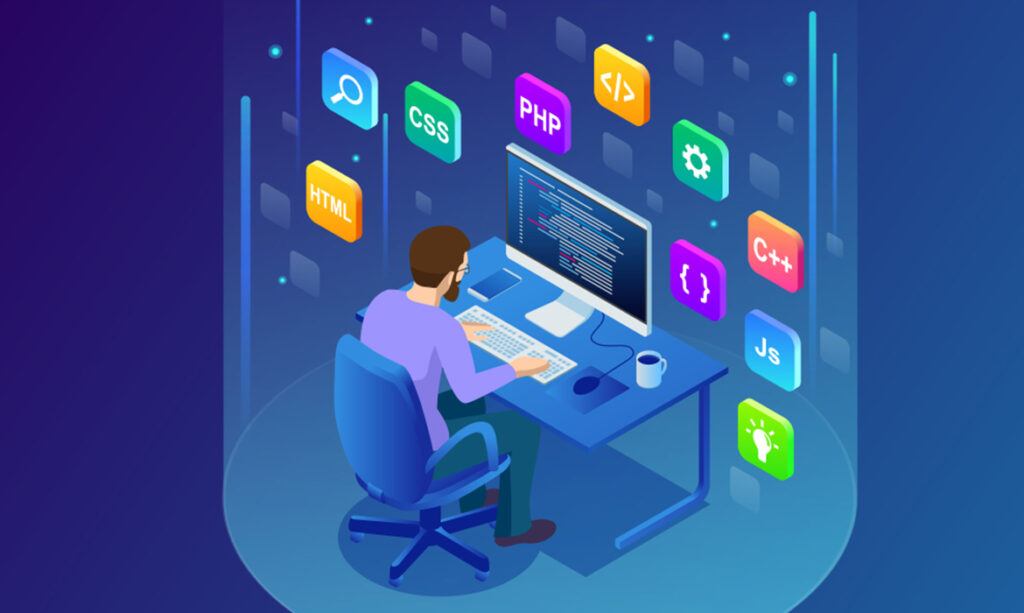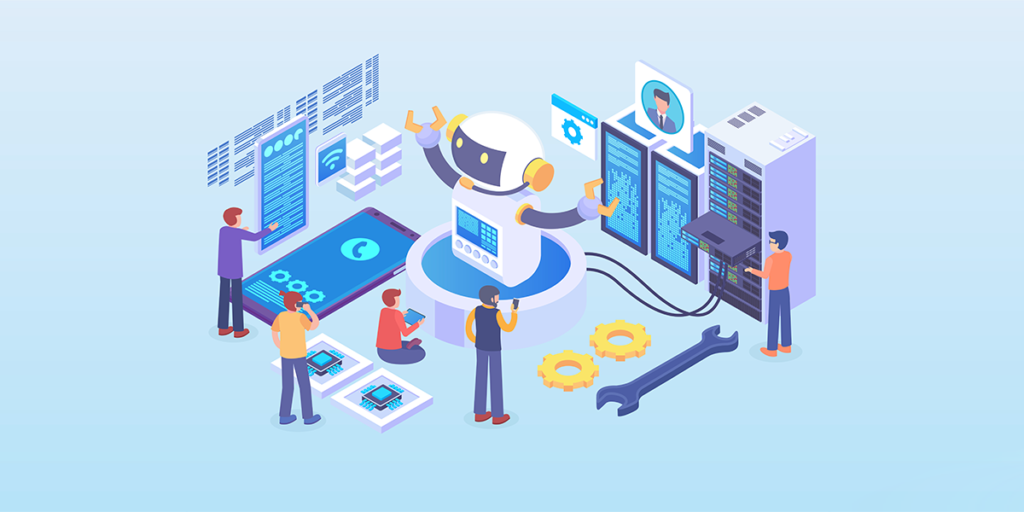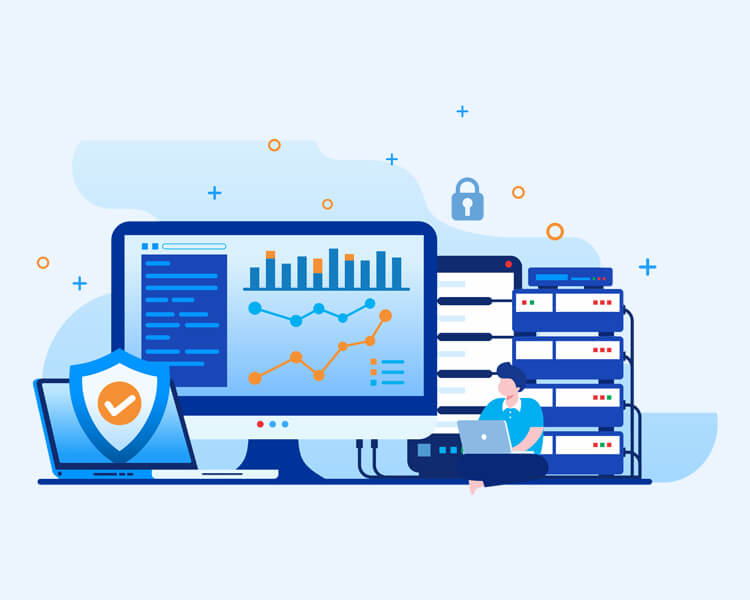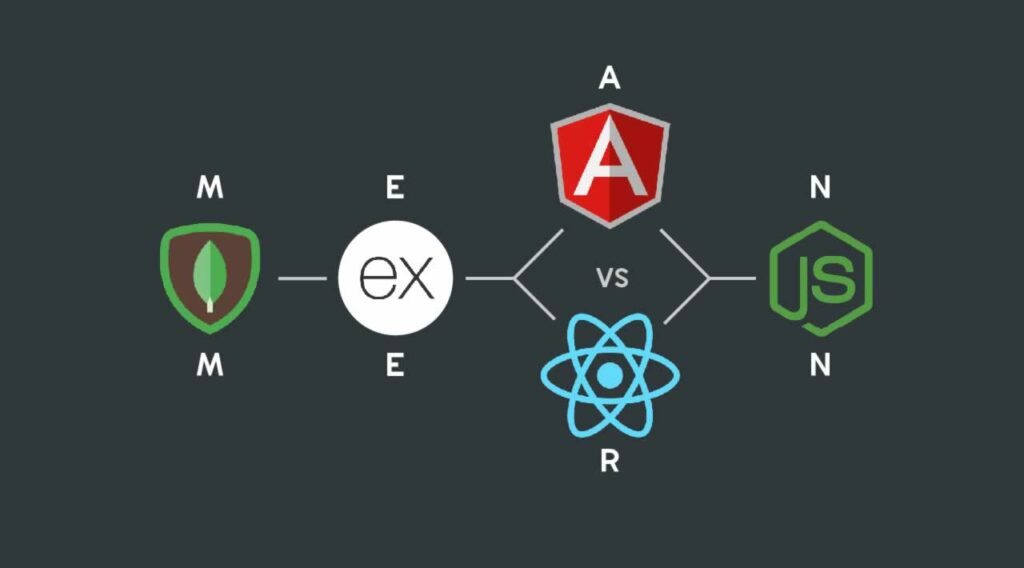Technology Stack for Project
Technology has become so entrenched in our lives and an integral part of it that it becomes a bit difficult to imagine our everyday life without it. Initially, there was not much choice of programming languages, frameworks, or libraries, and the developers creating the first programs proceeded from the limited choice. Today, however, the choice has become more extensive and often one project consists of many different technologies. How correctly you choose the “technology stack” is a big part of the success of your business.
In this article, we will consider what the “project stack” is, what it affects, what kinds of stacks exist, and how to choose it correctly. Enjoy reading!
What is a Project Stack
A technical stack is a set of combinations of different technologies that developers choose to work on an application and use to create, run, integrate, and manage the project. The stack consists of the programming languages, frameworks, and databases that will be applied to the project and serve to seamlessly transfer data between them.
Now let us glance through a few examples of project stacks, such as:
- Python
- JavaScript (JS)
- Django
- MySQL
- Apache
What the project stack is for
In order to properly calculate the project budget and the time it will take to develop – you first need to select the technology for your startup. The quality of your product will depend on this, as well as the speed of its creation.
What else is affected by the stack:
- The goals and needs your idea will meet
- The functionality of the project
- Ease of maintenance and scalability
- Method and location of data storage (on-premises or cloud)

The Importance of Choosing a Technology Stack
When choosing a stack, you need to know what your decision will ultimately affect, namely:
- The type of product you will be able to create
- The ability of your project to improve and upgrade in the future
- The team of developers you will be able to hire
- Performance
- Regularity of support
When the technologies you choose complement each other, your development resources are used more efficiently and serve as a conduit between you and your goals.
Keep in mind that you might have to make some compromises when choosing a stack. For example, some technologies may save development time but be limited in functionality and customization. Other technologies have great scalability but depend on frequent maintenance. There are technologies that are suitable for creating projects for a specific target audience (e.g. iPhone or Android users)
Many doors are open to you because, with a wide range of technology choices, you can choose what’s right for you and change technology as your business grows
Here are a few reasons why the technology stack is important:
- Tracking the progress of development: the ability to make adjustments to the project and stay within your planned budget
- Optimizing performance: improving current technologies, identifying and prioritizing development phases
- Increase the speed of development: reach the market faster and become more competitive
The Right Technology Stack for a Project: How to choose
One of the initial stages of creating a project is choosing the right tools for its implementation, namely the technical stack. Not only the subsequent work on the project, but perhaps a large part of the success of your enterprise, will be the envy of how well the stack is chosen.
You should not choose a stack for your project just because some technology is at the peak of popularity or because your competitors use a similar one. Solutions that suit your competitors in your business sector may not suit your specific project.
Currently, IT technologies are provided with a large selection of programming languages, frameworks, and various databases. All so that developers have a wide choice of technology stacks and create a variety of projects.
In order to choose the right tools – carefully analyze your project, its goals, and values, as well as your capabilities, and choose exactly those technologies that meet the needs of your specific needs.
Please note the following:
- Programming languages
- Your operating system
- Libraries and frameworks
- Databases and cloud storage
- Technical support from the development team

What Kinds of Technology Stacks are Available for the Project
What kinds of stacks and technologies are there for a startup? Before you begin studying the details, it is worthwhile to know what kinds of stacks there are for a startup, and what their key differences are
Client-side or Frontend: the technologies of this stack are used to display information and allow the user to interact directly with this information. In other words, these are the technologies responsible for the public part of the application.
An example of frontend technologies: HTML – CSS – JavaScript
Server-side or Backend: The application, its logic, and the interaction of the content with the server is the task of the Backend stack technologies. Although the whole process of working on this stack is hidden behind the surface and often goes unnoticed by users, it is this stack that allows your application to work
An example of a server stack: PHP – Python – Java
What to Look for Before Choosing a Project Stack?
As we wrote above, to avoid a failed project launch, you should choose the technologies that will meet the needs of your project exactly, will bring your startup to market faster than the competition, and will also help to fit within the budget.
So what does this require? Carefully familiarize yourself with the technologies, their advantages, and disadvantages, analyze the information, and make your choice.
In the meantime, we have gathered for you a few indicators that you should pay attention to so that the choice you make will not disappoint you:
1. Scale of the project:
Pay your attention to the planned scale of the startup. This is one of the decisive indicators when choosing technology. The volume of the stack and the complexity depends on the scale you want to put into your project
2. The time you need to present your project
How much time you take to get your project to market determines your competitive ability. If you don’t want to make up for a lost time, analyze and select technologies that are easy to implement.
3. The maintenance and support needs of the application
What technology you put in your project can determine the need for support for your project and the frequency of updates. To do this, you need to assess the ability of your development team to support your project and make necessary changes after the project is implemented. It is very important to choose the technologies that will not slow down your project maintenance process because the support process should be available even considering the high scale of your project
4. Assess the professionalism of your team
The technology stack you can use also depends on the level of expertise of your development team. If you want to do without outsourcing, you should consider the professional background of your specialists and how deeply they understand programming languages, frameworks, and other tools
5. Calculate the budget
Pay attention to the cost of implementing a programming language or framework. However, when calculating these costs, entrepreneurs should not consider only the initial licensing fees. Instead, consider the initial costs, as well as project support, upgrades, and maintenance costs that may be associated with a particular technology stack
6. Data security
Your project must be reliably protected from cyberattacks, which are becoming more and more frequent lately. Take security as seriously as possible to secure your data and that of your users
7. The prospect of further scalability of your project
From the very beginning of development and planning, think about the possibility of scalability of your project. Select such technologies that will allow you not to stand in one place, but introduce new interesting features and thus attract more users. In other words, think about the future of your project, its prospects and choose the tools that will help your business to grow

Stages of Selecting a Project Stack
Understanding the requirement and the overall idea will help you reach a mutual understanding between you and the customer. An effective stack selection process will also make this task easier. Below is an example of the stack selection process:
Step 1 : Obtain comprehensive project requirements
Before coming up with ways to implement the project, the development team should understand the basic idea and purpose of the product as accurately as possible. And to do that, they need to find out as much detail as possible and understand the key requirements.
Try to answer these questions:
– What is this project for? Who is the target audience?
– What features should be implemented and what are the key characteristics of this project?
– How should these functions work from a technical point of view?
Step 2: Identify the business goals to be achieved
In this step, you need to understand what you are aiming for and give a clear explanation of your goals and plans.
An example of questions you can ask yourself:
– Why and what is this project for?
– Why should consumers like this project?
– Why should the features you are going to implement work this way and not that way?
Step 3 : Identify for yourself the most difficult technical elements and tasks and focus your attention on them
In this step, you can engage a technical director, technical leads, and DevOps team to translate your strategy and technical requirements into technical specifications and responsibilities that the developer understands
Step 4 : Engage the team
This stage of development is characterized by the fact that in this stage, developers study and analyze the upcoming challenges and present to the technical director the most effective ways to solve them
Ready-to-use Stacks
Thanks to the rapid development of technology, there are now ready-made stack options that can simplify the work of the development team. These carefully selected solutions are designs for creating medium to large projects:
1. LAMP stack
If you want to increase the efficiency of your project, but at the same time reduce your budget – look at this stack. This stack is often used to build web applications due to its adaptability, open source, and security.
The stack combines the functional base of the following technologies: Linux – Apache – MySQL – PHP
2. MEAN stack
This stack is a nearly complete JavaScript platform for building complex, fast and reliable web applications.
This stack includes the following technologies: MongoDB – Express – Angular – Node.js

3. MERN stack
The main purpose of this stack is to help developers stay agile during development. Technologies from this stack are often used to create e-commerce applications. Where React.js is used for the frontend part, and Node.js is used for the backend part of the application
The stack consists of the following technologies: MongoDB – Express – React.js – Node.js
4. MEVN stack
This stack is a refinement of the MEAN stack. This stack uses Vue.js as the frontend technology.
As a result, the stack consists of the following technologies: MongoDB – Express.js – Vue.js – Node.js
Conclusion
To compose a technology stack for your startup from many different technologies – you need to be clear about your project goals and ideas because choosing a stack is a matter of competent and clear planning.
There are two main factors that you should pay attention to in the selection process:
- Your project (its scale, goals, budget, time to market, security, etc.)
- The team of qualified specialists (it’s level of training of the development team, the ability to maintain the project after its completion, flexibility in the process, and the ability to adapt to changes)
Study these factors carefully so that you do not make a wrong choice and reach a mutual understanding between you, the team, and the client.
Your choice determines your competitiveness, the stability of your business, the popularity of your idea among users, and the future of your project. Therefore, carefully analyze all the requirements and metrics so that your choice will be as successful as possible.
Contact us
If you have any questions or need help choosing a technology stack for your startup, feel free to contact us. The OSSystem team will be happy to provide you with advice and support in choosing the best technology stack. We will recommend the best technology stack and different project practices to ensure effective project implementation. Please explore our blog for other technical aspects.
![]()
Subscribe to us











[…] The right technology stack is the key to project success. Your competitiveness, development time and budget depend on how competently you select technologies for project implementation. How to choose a technological stack for the project and not to make a mistake? Read in our article […]